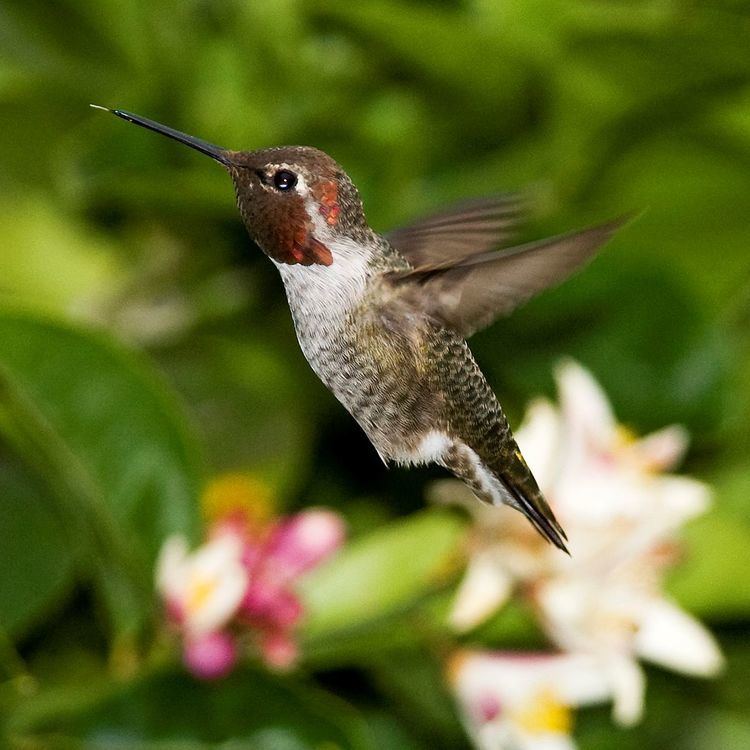 | ||
Sonation is the sound produced by birds, using mechanisms other than the syrinx. The term sonate is described as the deliberate production of sounds, not from the throat, but rather from structures such as the bill, wings, tail, feet and body feathers, or by the use of tools.
Examples are the tonal sound produced by the tail-feathers of the Anna's hummingbird Calypte anna, the drumming of the tail-feathers of the African snipe and common snipe, bill-clattering by storks or the deliberate territorial tapping practised by woodpeckers and certain members of the parrot family, such as palm cockatoos which drum on hollow trees using broken-off sticks. The clapper lark's (Mirafra apiata) display flight includes a steep climb with wing rattling.
Barn owls produce a clicking snap to show annoyance or fear. Bustards, floricans and korhaans of the Otididae include foot-stamping in their mating displays. Studies have revealed at least four sonations employed by two manakin genera Manacus and Pipra - wing-against-wing claps carried out above the back, wing-against-body claps, wing-into-air flicks and wing-against-tail feathers. Video footage of male club-winged manakins, Machaeropterus deliciosus, shows them producing sustained harmonics derived from vibrating secondary wing feathers. This mechanism is the avian equivalent of arthropod stridulation.
Adult male red-billed streamertail hummingbirds (Trochilus polytmus) have long tail streamers, but these do not produce their distinctive whirring flight sound. Evidence points to the wings instead - the whirring is synchronised with the wingbeats and video footage shows primary feather eight (P8) bending with each downstroke, creating a gap that produces the fluttering sound.
Identification
Many naturalists are developing bird recognition apps, with varying results. Like Shazam, bird identification apps use spectrographic audio analysis to record several seconds of the bird singing, find distinguishing aspects of a bird’s song, and search the database for positive matches. However, because bird calls, unlike pre-recorded music, sound subtly different every time, the technology requires to add a wide variety of bird songs into the database, with multiple variations per species.
Popular bird identification apps include Warblr and Bird Song ID USA.
